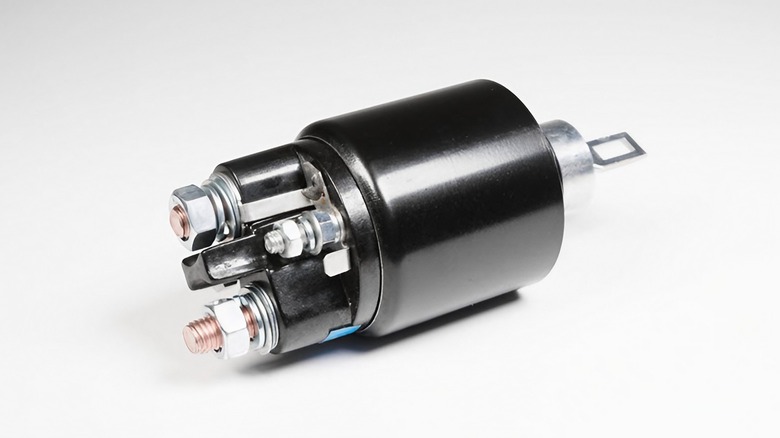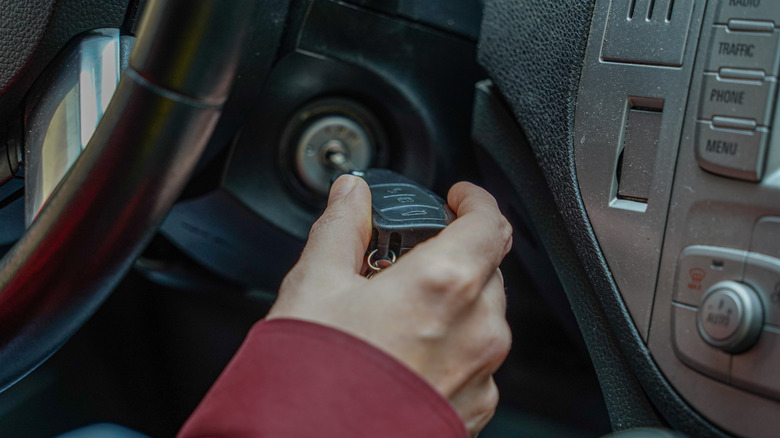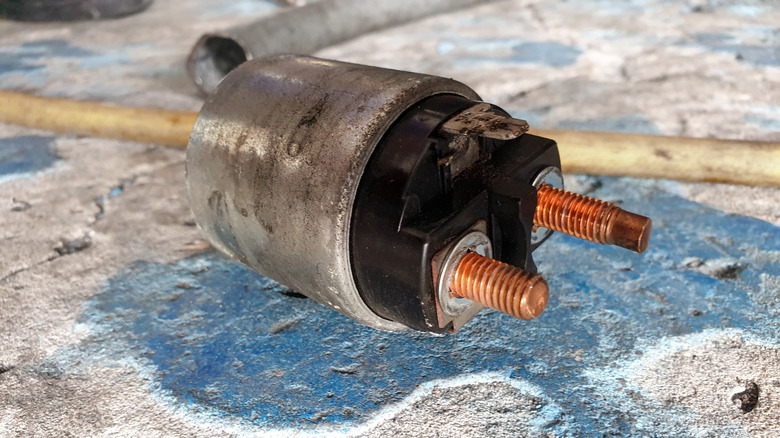What Is A Solenoid & How Does It Work In Relation To Your Car's Engine?
Solenoids are everywhere. They open the water valve in your dishwasher, control the flow of gas in your stove, regulate ink delivery in printers, and play a crucial role under the hood of your car. Essentially, a solenoid is a compact electromagnet that can be used as a mechanical or electrical switch. Its main component is a coil of wire that's wound around a cylindrical support known as a bobbin. There's also a ferromagnetic plunger running lengthwise through the open center of the bobbin and coil. This plunger is positioned so that it can slide back and forth when the solenoid is energized.
When electricity flows through the coil, it generates a magnetic field that moves the plunger. On mechanical solenoids, that movement often opens or closes a valve, allowing liquids or gases to pass through. When the current is cut, the magnetic field disappears and the spring-loaded plunger slides back into its original position, returning the valve to its rest state. Electric solenoids like starter solenoids also use the plunger to open or close a circuit, acting as a relay and allowing a low-amperage ignition switch to initiate the heavy flow of current needed by the starter motor. Without it, automakers would have to use thick wiring and bulky ignition switches, which are impractical for car dashboards and consoles. Solenoids also manage other functions on a car's engine, like fuel delivery and emissions control.
How a starter solenoid works
When you turn the key in your car's ignition or press the start button, it passes a small electric current from the battery to the starter solenoid. This activates the coil inside the solenoid, moving its internal plunger. That plunger has two main jobs. It pushes a small gear called the pinion forward so it meshes with the engine's ring gear, which is attached to the crankshaft. It also closes a set of heavy-duty electrical contacts inside the solenoid, sending enough juice to the starter motor to turn the pinion and start the engine.
Once the engine is running and you release the key or starter button, the solenoid quickly disengages and pulls the pinion gear back, cutting off power to the starter and the connection between the pinion and ring gears. Solenoids are used for a bunch of other functions on modern cars. You'll also find them in emissions control systems, managing exhaust gas recirculation (EGR), and in Honda VTEC and Toyota VVT-I variable valve timing (VVT) systems.In the Chrysler 5.7-liter HEMI, MDS solenoids are used to deactivate specific cylinders to improve fuel efficiency.
Why a failing solenoid shouldn't be ignored
It's usually pretty easy to tell if one of your car's solenoids fails. If it's the starter solenoid, the most obvious sign is a clicking sound when you turn the key or a starter that cranks hesitantly. Solenoid contacts can wear out over time, and the internal components can be damaged by corrosion or heat. The solenoid acts as a critical bridge between the battery and the starter, and any disruption in power flow can leave you stranded. Replacing a starter solenoid is a fairly simple process, but troubleshooting electrical issues can be tricky.
Learning how to use a multimeter to check for voltage drops or continuity interruptions can help you identify exactly where the problem is in your starting circuit. But if the solenoid is truly dead, there's no choice but to replace it with a new one. You might think you could simply jumpstart your car, but it's not so easy with a dead starter solenoid. Instead, you'll have to bypass it by hot-wiring your starter motor directly to the battery. This might've been cool in a '70s action flick but it's not recommended for modern cars with sensitive electronics. Failure of other solenoids might be a reason your check engine light is on, in which case you'll want to use a code reader to diagnose the problem.


